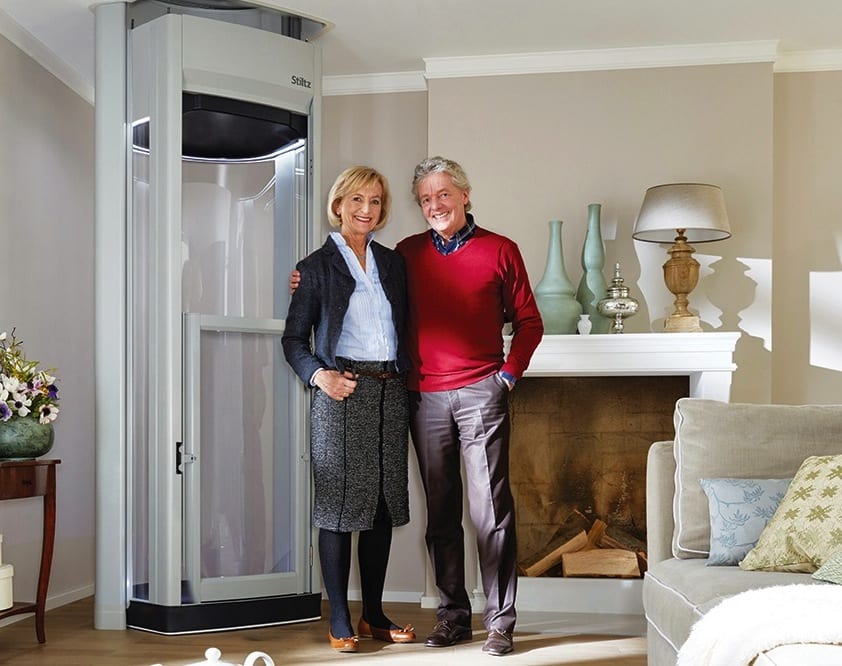In Georgetown’s Hot Housing Market, Demand for Elevators ‘Going Up!’
By • May 24, 2021 One Comment 2584

Covid-19 seems to have caused an unexpected new housing boom, especially in small, vibrant and green communities within senior-friendly cities like Washington, D.C. And, that means Georgetown – where the real estate market is hot.
Houses are being bought up at record speed and that keeps the supply low, prices high and realtors busy. They’re adjusting to the new demand as fast as they can, according to Nancy Taylor Bubes, a top real estate agent at Georgetown Fine Properties, who spoke with the Georgetowner.
But the demand for housing amenities has changed as well. Changes are due not only to Covid lockdowns for over a year, but to changing demographics in Georgetown where an increasing number of duo-professional families with young children and seniors are leaving their big suburban homes to live in smaller, more vibrant and walkable city communities. Such as Georgetown.
In their newsletters, real estate agents report that due to new habits formed during the pandemic, home buyers and owners want easily accessible outdoor space in which to live and entertain outside in the fresh air. They want privacy as well. And since many have taken up cooking and gardening during the lockdowns, they also want green space to plant vegetables, herbs and flowers.
“But the hottest item that will sell a home today is – an elevator,” Bubes told the Georgetowner. That’s because almost all single-family homes in Georgetown are vertical: multiple stories with two or three staircases or more. And that’s because the fastest growing demographic in America, and also it seems in Georgetown, are seniors – 65 years and older.
Demographics show that the surging population of seniors is due to the baby boomers growing older while still remaining active. Many seniors in Georgetown have had vibrant professional careers in which they are still working either full- or part-time, or are serving in an advisory capacity. They want to be active in social affairs and in their passionate pursuits as well. Many choose the District because as the nation’s capital, the “National Association of (name your passion)” is probably located in the city and could always use knowledgeable board members, advisors, volunteers and advocates. Many Georgetown seniors are such an engaged bunch. But, their bodies are growing older and their mobility is becoming a challenge. So, most want to stay active while aging “in place” at home.
Among all the impacts of the aging-in-place movement, the need to redesign a home for growing older is becoming the most visible and pressing for realtors. Probably the most common renovations – usually made in a rush after a sudden mobility-challenging event like a stroke or a fall – are to put up grip bars in hallways, bathrooms and bedrooms. Lighting can be increased. Bath benches can be bought for sit-showers.
But none of this needs to look like a hospital emergency room. “Best if easier mobility features can be built into a remodeled home,” said Bubes, “They can be part of the design, even sexy looking. ” Bubes admitted she was doing just that in her new apartment at her waterfront complex in Georgetown. Most popular restructures for growing older (or having kids with lots of wheeled toys) also include wider doors and staircases, ramps around entrance stairs, faucets with handles, automatic lights and better insulation.
Elevators are a relatively new feature however, even in horizontally challenged homes in Georgetown. Often staircases are too narrow even for stair-lifts – mobile seats conveyed along one side of a staircase. Elegant-looking, glassed-in, one-person home elevators are beginning to be marketed. They have the added advantage of being able to carry laundry and packages upstairs, kids’ stuff and even wheelchairs.
“Every new home in the development where I bought a retirement home in Florida, had an elevator,” said Georgetown-Burleith Advisory Neighborhood Commissioner Chair Rick Murphy.
Is there help covering the costs of remodeling for aging-in-place? “You might be able to get help paying for these changes,” the National Institutes of Health advises See: https://www.nia.nih.gov/health/aging-place-growing-older-home#planning
Certified Aging in Place (CAP) counselors, who can help with ideas and even supplies, are becoming an intrinsic part of state and local government services. The District has a well-staffed, comprehensive Department of Aging and Community Living with lists of agencies and partner companies that can help.
“It’s never too soon” to think about adding features that will help multigenerational home owners and all those growing older, Bubes concluded.
Some call it “gracious aging.”
This story was supported by a Journalists in Aging Fellowship from the Gerontological Society of America, the Journalists Network on Generations and the Silver Century Foundation.


Would like elevator company names to add an elevator to our G’town, DC home